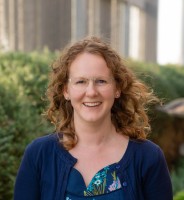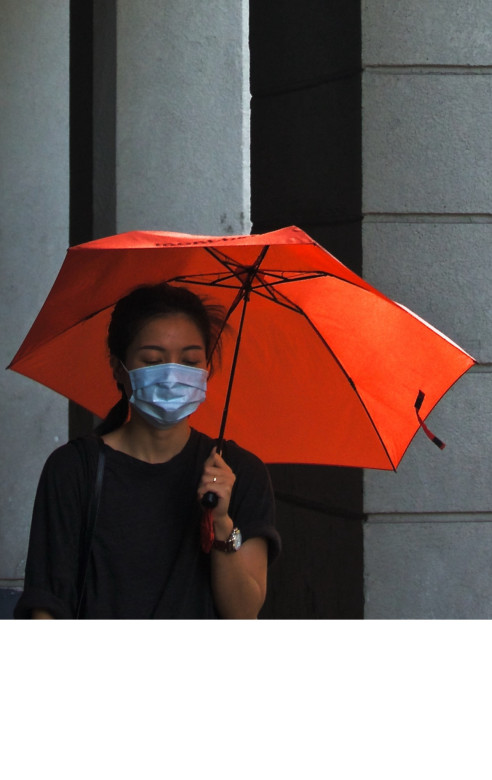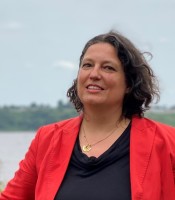
What do experimental studies reveal about the role of volatile organic components in lung inflammation?
It is the volatile organic compound (VOC) component of the traffic air pollution mix that is responsible for the effects on lung inflammation, rather than particles and other gases like nitrogen dioxide or carbon monoxide. Basically, VOCs are carbon-containing compounds that exist as vapors or gases. Common examples include gasoline fumes and solvents. We obtained this result following an experimental study on the physiological response of subjects near heavily trafficked roadways. We asked participants to stand by the side of the road, with each one wearing a different kind of respirator on each of several weeks to filter out various parts of the air pollution mix and then looked at markers of inflammation in the lung airways. We found that lung injury increased on exposure to traffic, continued when we removed only the particles, and was completely blocked when we removed both the particles and the VOCs. This was really a surprise because it goes against the prevailing opinion. It is generally agreed that particulate matter is the main problem. VOCs were suspected to play a role, but it was never previously shown. As a next step, we are going to complete our analyses of follow-up traffic intervention studies. We especially want to assess gene-environment interactions and effects on the heart. We also plan a new intervention study employing in-vehicle air filtration.
To what extent can air pollution models contribute to identifying impacts on people as a whole?
Observational studies, such as population studies, show impacts on people as a group. They usually address questions in particular relating to long-term effects, although short-term effects can also be investigated. Specifically, this type of traditional epidemiological research consists in comparing exposure and disease status of patients on a larger scale, so we absolutely needed a reliable tool to measure air pollution variability in China. That is another important contribution of the Chair: the development of advanced air pollution exposure prediction models for China. Using advanced methods, we developed a spatio-temporal air pollution model for Beijing to obtain precise estimates of exposure over time in the city. Similarly, we created spatial models nationwide capable of generating valid point predictions all over China. Using another of our exposure predictions, we were able to carry out a very innovative study of the effects of air pollution on miscarriages. Working with hospital obstetrics investigators in Tianjin, a large city near Beijing, we determined that early pregnancy exposure to air pollution increases the risk of miscarriage. This is the first study anywhere that identifies susceptible exposure periods, and is but one of several upcoming applications of our air pollution prediction models. We are now extending our analyses of the early pregnancy loss study data. We’re also implementing a mobile air monitoring campaign in Beijing to enhance our spatio-temporal model for application in the BABIES project (Beijing Air Pollution and Birth Weight Impacts Examination Study). This is a new collaboration we have with a US NIH-funded study in Beijing on birth outcomes and air pollution.
What are the impacts of air pollution on the heart and on the brain?
The whole issue of air pollution turns out to be a surprising area of research. We had a narrow vision before, but it seems that air pollution effects are way more pervasive. For instance, we’ve collaborated with the Tianjin Medical University and Nankai University on an experimental study looking at the effects of air pollution on cognition. We administered English language exams to university students in both air filtered and non-filtered classroom environments. Initially, I wasn’t convinced we were going to find anything, but our preliminary results show a relationship between clean air and higher test scores. As I mentioned, we’ve also continued the roadside experiments but looking at cardiovascular outcomes this time. We’re just completing a manuscript in which results show a clear impact on the heart. Also, in our recently completed nationwide study in China using our exposure predictions, more exposure to air pollution was linked to cardiovascular disease measured by advanced x-ray methods. There’s now good evidence that air pollution triggers biological mechanisms outside the lungs.

What has been the influence of your research in the development of health and environmental policies in China?
My research has provided a sound scientific basis to a very fractured debate. There are lots of interests at stake, with some trying to minimize the effects of air pollution and others trying to dramatize them. I try to bring a rational approach to the table by utilizing the best possible science in an area that is very controversial. Now, with the results we’ve obtained, and the numerous discussions we’ve had with researchers known to influence decision makers, we’ve strengthened the scientific basis for the effects of air pollution on health which is critical to public health policy, and we’ve helped put other pollutants and other health consequences on their radar. I think the area where we are most likely to see the impact of our work is on air quality control policies. Chinese air pollution regulations are not that strict, except for particulate air pollution, so there’s a good chance we’ll soon see changes there also.
What impact have your activities had on strengthening the environmental health research in China?
Professional and social interactions between all of the collaborators, administrators and staff at the institutions participating in my research program have proved to be very valuable professionally and have improved cross-cultural understanding and good will. The Chair enabled us to raise the profile of the University of Washington in China, highlighting its faculty, student and technical resources to investigators and institutions in China. From the CRAES perspective, as a result of the close collaborations of CRAES investigators with the AXA chairholder, who brought a strong background in air pollution exposure estimation and health effects, the most immediate impact was on the published output of CRAES investigators. The results of these collaborations are now disseminated in high quality journals in the field, with the work employing advanced methods for estimating exposure to air pollution and for making the link between exposures and health consequences. These new collaborations will further grow environmental health research in China and have a positive impact on higher education as well through the addition of well-trained environmental scientists.
More about Prof. Sverre Vedal
Professor Sverre Vedal is a pulmonary physician and an epidemiologist. He is a professor emeritus of environmental sciences at the University of Washington School of Public Health. In 2013, he was awarded the AXA Chair in Air Pollution and Health at the Chinese Research Academy of Environmental Sciences (CRAES) in Beijing, China. He holds a medical degree (MD) from the University of Colorado, as well as a master’s degree (MSc) in Epidemiology from Harvard University.
June 2020 | Photo: @photoholgic
Discover research projects related to the topic
Sustainable Living & City
Climate Change
Climate Adaptation & Resilience
Urban Planning
Resilient Infrastructure & Safety
Environmental Justice
Post-Doctoral Fellowship
Australia
2023.06.20
Indicators for Climate Resilient City Planning
Expected start date:June-2023 Cities contribute enormously to global greenhouse emissions and are key drivers of climate change. By the same... Read more

Melanie
LOWE




